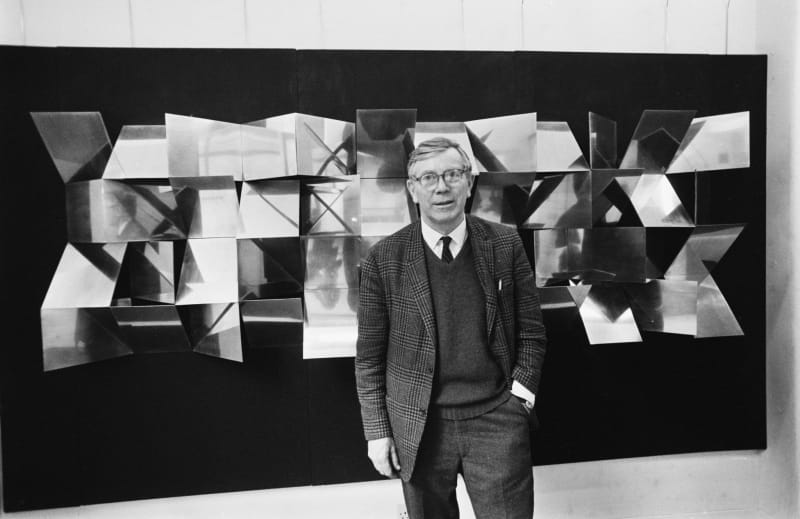George Warren Rickey US, 1907-2002
"My works have to be preconceived. I cannot improvise as I go along any more than you can improvise the making of a propeller or a washing machine."
- George Rickey
George Rickey is best known for his sculptures in motion, which are meticulously planned and engineered. These kinetic works rely entirely on air currents for their often languid, unpredictable movement. To focus the eye of the viewer on this movement, Rickey favored plain materials like stainless steel, which he felt emphasized motion and light rather than color or texture.
A practicing painter for many years, Rickey only came to sculpture in his early forties. Born in Indiana, Rickey moved to Scotland with his family when he was five. He trained as a painter in Paris and spent time in the studio of Fernand Léger. Ricky returned to America in 1934 and supported himself by teaching art. During World War II, he worked as an engineer in the Army Air Corps. Inspired by Alexander Calder's mobiles, Ricky began creating modest sculptures in the Air Corps' machine shop.
Shortly after the war, Rickey abandoned painting entirely to focus on sculpture. His early kinetic works vary from whimsical painted steel to sleeker, geometric shapes. By the early 1950s, he focused on simple geometric forms made of stainless steel. His work became more ambitious in sacle and, to focus the viewer's attention on form and movement, he eliminated color. This body of sculpture established Rickey's reputation and he began receiving commissions for large-scale public works.
- Courtesy of the Getty

